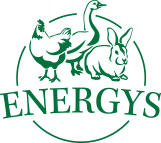Rabbits
Poultry
Laying hens
Quails
Guinea pigs
Pigs
Ostriches
Sheep and goats
Pigeons
Pheasants
Forest animals
Dam Pig breeds bred in the Czech Republic
Commercial pig breeders use both breeds that excel thanks to their reproduction parameters and breeds that pass on to their offspring good growth abilities, resilience and good meat quality. As a part of the hybridisation programme, the Pig Breeders Association and breeders work with dam breeds (Czech Improved White and Czech Landrace) and sire breeds.
Improved White (dam line)
The Improved White breed is the foundation stone for practically all world improvement and hybridisation programmes. In the Czech Republic, it accounts for the most numerous thoroughbred population that is used as a dam when crossing with the Landrace breed for the creation of sows in the F1 generation that are the mothers of meat pigs.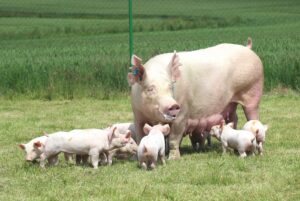
Improved White pigs have been bred in the Czech lands since 1926, when official checks on utility and hereditariness were introduced. Herd stabilisation was boosted by imports of, in particular, German improved pigs and Large White pigs from England. At the start, the breed was about reproductive utility and the exterior. The introduction of tests of actual utility lead to improvements in the composition of the meat torso with optimum representation of the meat parts and a reduction in the share of fat. When, as a part of the hybridisation programme applied in the 1980s, differential breeding started to be used, the Improved White pig was classified as a dam breed. The achievement of excellent reproductive abilities with a high number of viable and balanced piglets in litters was logically a primary requirement of breeding in the dam line. In addition, attention was paid to rapid growth and excellent conversion of feed with average muscle mass and meat utility.
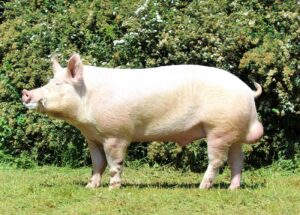 After 1989, there were a number of imports of Large White pigs in particular from England, Denmark, Sweden and France. Managing the breeding of pigs, including maintaining a breeding ledger, was the task of the Pig Breeders Association, which helped modernise the improvement programme. As a part of a programme that was launched on 1 January 1999, new improvement strategies were executed for the Improved White breed. They included integrating fertility into an estimate of breed value, the creation of super-fertile lines and a new approach to assessing the exterior.
After 1989, there were a number of imports of Large White pigs in particular from England, Denmark, Sweden and France. Managing the breeding of pigs, including maintaining a breeding ledger, was the task of the Pig Breeders Association, which helped modernise the improvement programme. As a part of a programme that was launched on 1 January 1999, new improvement strategies were executed for the Improved White breed. They included integrating fertility into an estimate of breed value, the creation of super-fertile lines and a new approach to assessing the exterior.
The aim of creating a super-fertile line was to accelerate the increase in fertility for the Improved White breed. In the selected population with the highest breeding value for fertility, the utility check was expanded to include other characteristics, such as individual birth weight, genotype in estrogen locus, the points value of sows’ dam characteristics and the length of labour in hours.
When selecting animals for breeding, preference was given to individuals with a large body frame, i.e. a sufficient withers height and appropriate length of the middle body. Another criterion was the mammary gland and the number of teats. In the case of a super-fertile line, the minimum number of teats on both sides is set at 8/8, which must be visible in both sexes. Great attention was paid also to the sexual expression of both sexes and, last but not least, the shaping and functionality of limbs, which are a predisposition factor for long life. With regard to the new direction in improvement, the Improved White breed started to be called Czech Improved White (CIW). Animals in the aforementioned breed stand out thanks to their large body frame, lighter head with straight ears, more delicate, but solid skeleton and solid constitution with a high degree of resistance to stress. Their skin and bristles are white. The dam lines excel thanks to their reproductive properties, excellent growth ability with very good nutrient conversion, optimum meat utility and good meat quality.
Landrace
Landrace is the second most widespread breed globally. It is a dam breed and this governs its improvement. Today,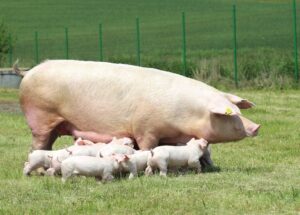 the main selection criteria is the number of surviving piglets, or rather the number of meat pigs sold. Practically all global improvement programmes deal with the balanced nature of a litter, piglet vitality and mother’s milk production. In addition to reproduction, a Landrace is require to have a large body frame with an appropriate length of the middle body. Good growth ability is a matter of course.
the main selection criteria is the number of surviving piglets, or rather the number of meat pigs sold. Practically all global improvement programmes deal with the balanced nature of a litter, piglet vitality and mother’s milk production. In addition to reproduction, a Landrace is require to have a large body frame with an appropriate length of the middle body. Good growth ability is a matter of course.
The basis of breeding Czech Landrace (CL) were thoroughbred pigs imported at the start of the 1960s from Poland, Canada, Germany, Sweden and later, in particular, Denmark and Norway. From the 1960s, the breed started to be successfully used for the creation of sows – crossbreeds in the F1 generation (with the Improved White breed) for production herds. As a part of the hybridisation programme, they are currently used as one of two basic dam breeds, which are required to have excellent reproductive properties with higher numbers of live-born piglets in litters and high growth intesity.
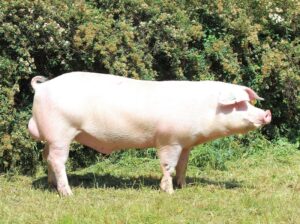 When there were quality defects with the meat (pale, soft, exudative meat – PSE) in the 1960s at slaughterhouses, it would found that this was a consequence of using stress-positive individuals (recessive homozygote in the halothane locus) in the breed. The halothane test was used to eliminate individuals with a tendency towards stress; it was successful and contributed to an improvement in the situation.
When there were quality defects with the meat (pale, soft, exudative meat – PSE) in the 1960s at slaughterhouses, it would found that this was a consequence of using stress-positive individuals (recessive homozygote in the halothane locus) in the breed. The halothane test was used to eliminate individuals with a tendency towards stress; it was successful and contributed to an improvement in the situation.
Pigs in the Czech Landrace breed have a larger body frame, a finer, but solid skeleton and a light head. Their ears droop and are reasonably long. They may have a more delicate constitution, but a solid and high degree of resistance to stress. Their skin and bristles are white. They have very good reproductive properties and high growth intensity with very good conversion of nutrients and meat utility.
Related posts
24. August 2021
In December 2020, fifty-three pig farms in the country were under the organic farming regime. Most of them are breeding black-footed pigs, which have been classified as genetic resources since 1992. The Hungarian curly-coated pig is a similarly hardy and undemanding breed, which is also growing in popularity with our breeders.
25. May 2021
In the Czech Republic, breeders work with sire breeds (currently represented, in particular, by White Sire, Duroc and Piétrain), including their synthetic lines (SL 34, SL 38, SL 48 and possibly SL 68) and pig dam breeds.
18. May 2021
Commercial pig breeders use both breeds that excel thanks to their reproduction parameters and breeds that pass on to their offspring good growth abilities, resilience and good meat quality. As a part of the hybridisation programme, the Pig Breeders Association and breeders work with dam breeds (Czech Improved White and Czech Landrace) and sire breeds.
19. June 2020
In order to assure that the pigs are in a good state of health, it is essential to feed them grain feed as a basis. Selection of these feeds is limited not only by the farmer’s potential, but also the chosen farming method. For example, the rules of ecological farming place emphasis on providing organically…
11. May 2020
Pigs were gradually moved from outdoors into enclosed styes, which developed into sophisticated stye capacities utilising technologies not only for automated feeding and water supply systems, but also for controlling the stye environment, in commercial farms. Ecological farming trends have been popular for some time in Europe in relation to demand for healthy products from…
Related products
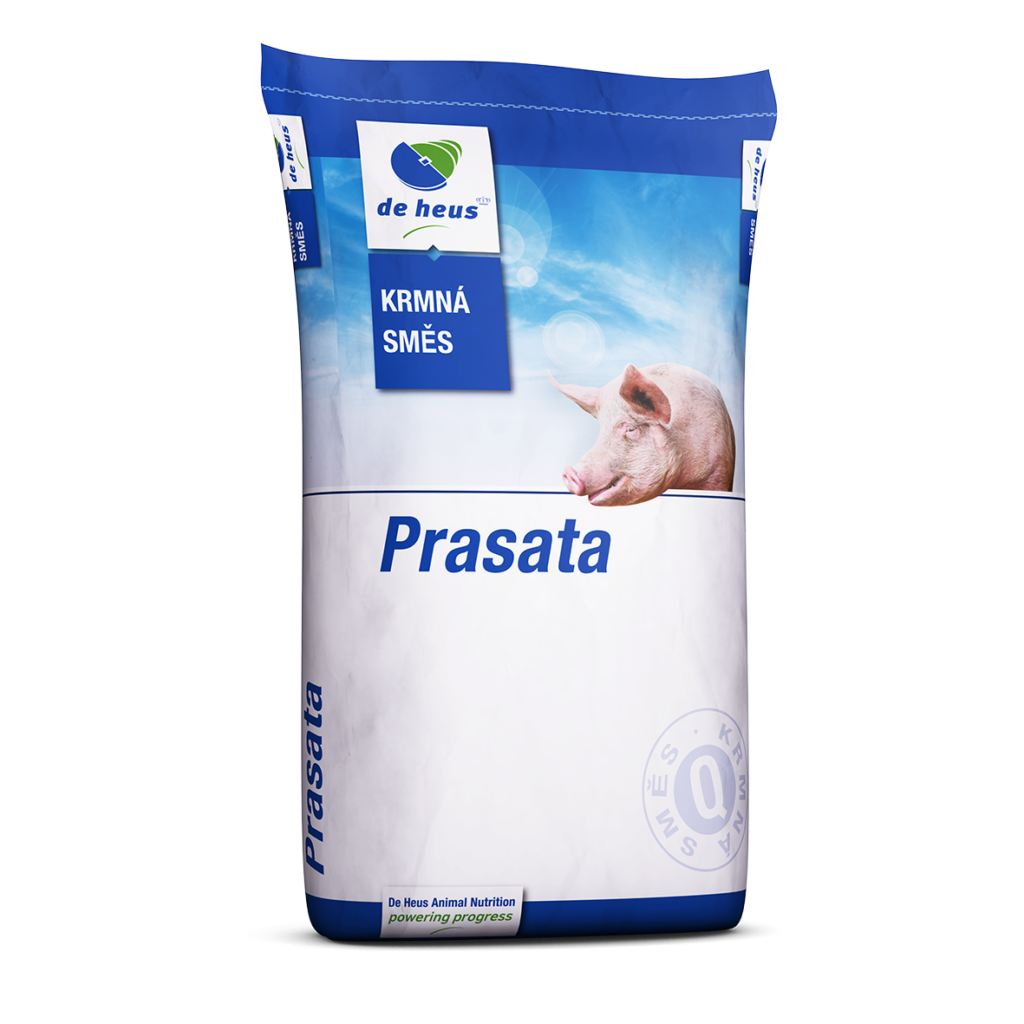
PIG UNI 15
A mashed concentrate for fattening pigs, which is mixed with cereals depending on the fattening phase in a ratio of 11 – 16 %. It is a garauntee of high growth.

A3 MAXI
A complete feed mix for fattening pigs over 60 kg. Its make up supports fast growth allied with low consumption of feed during the final phase of fattening.

A2 MIDI
A high quality granule for the feeding of pigs from 35 to 60 kg. A balance of the nutrients needed is the basis for an excellent state of health, fast growth and high meat content.

A1 MINI
Granulated feed mix for the first phase of fattening pigs, that is from a live weight of 15 to 35 kg. The nutrients it contains support an excellent state of health, fast growth and high meat content in your pigs.
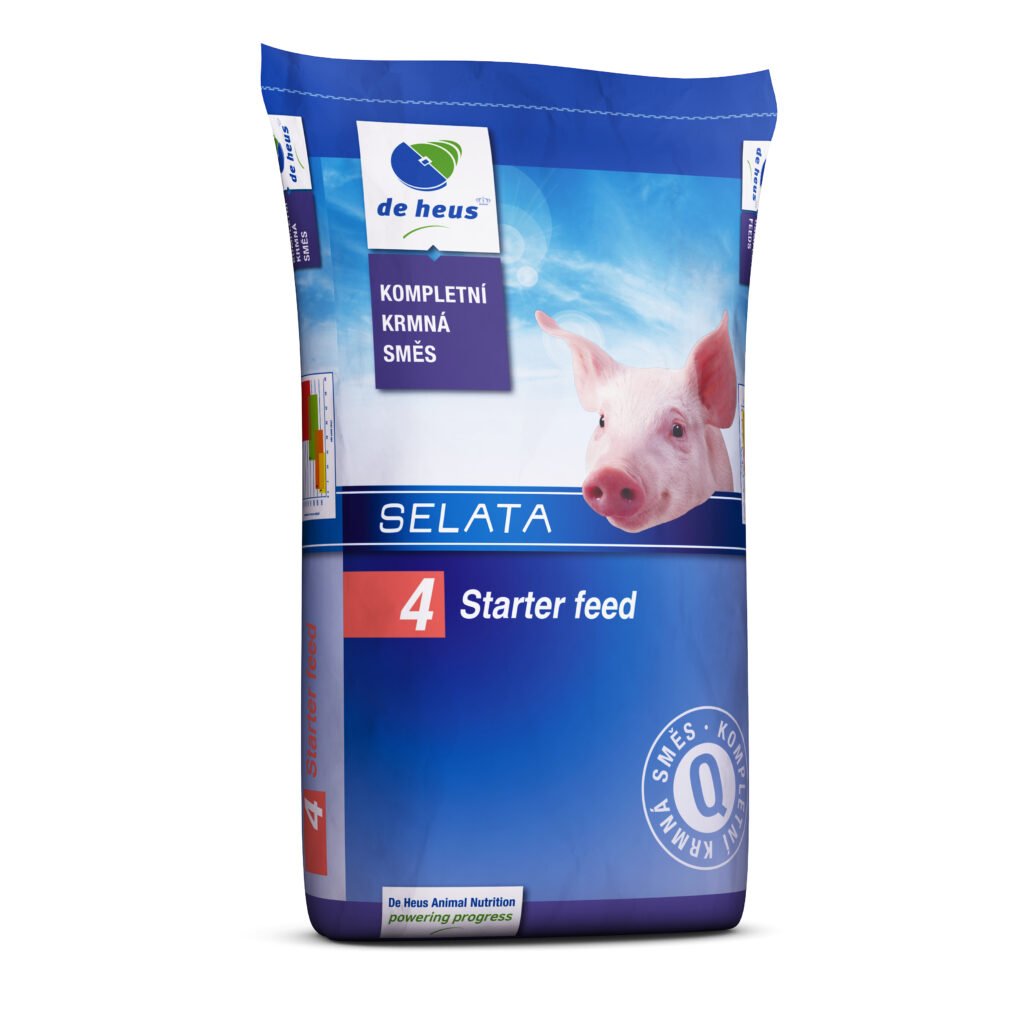
A1 START
A professional feed intended for weaned piglets with a live weight of 12 kg of up to 12 weeks of age. It provides an ideal start to piglet growth. This feed is followed by fattening mix A1 Mini or the Pig Uni 15 concentrate.
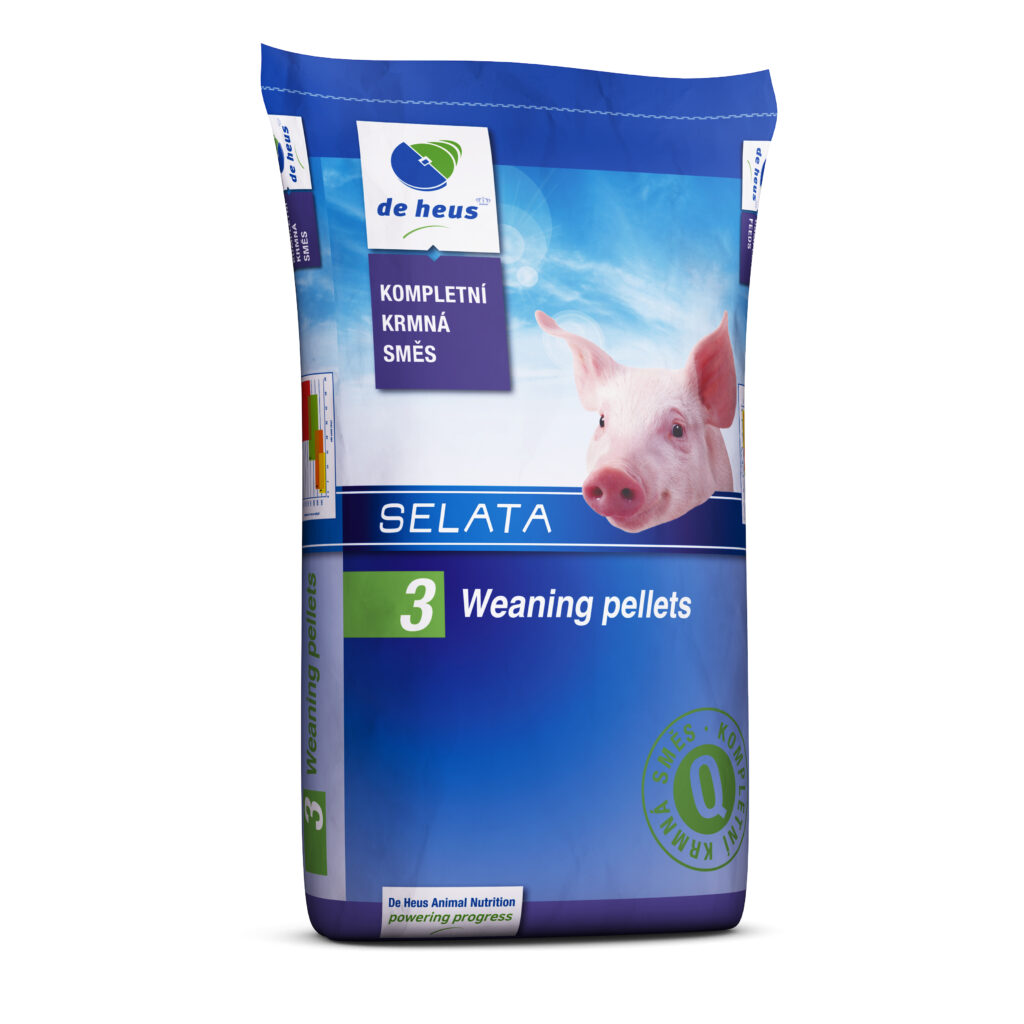
WEANING PELLETS
A prestarter for piglets from 10 days of age to 14 days after weaning from the sow. Its structure of 2 mm granules ensures problem free intake and overcoming the weaning period. Among other things it contains whey and fish flour which ensures fast growth in piglets.
